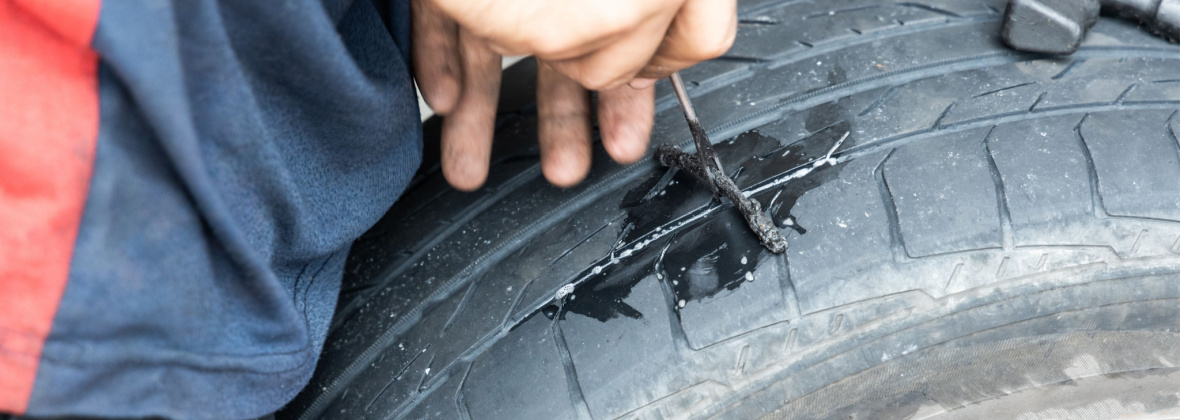Tire Tracks Morris IL: Quality Tires for every single Car
Tire Tracks Morris IL: Quality Tires for every single Car
Blog Article
Expert Guide to Tire Repair: Everything You Need to Know
Navigating the globe of tire repair can be a challenging job for several lorry owners. From determining the usual causes of tire damages to understanding the intricate steps associated with fixing a puncture, there is a wealth of knowledge to realize. In this thorough overview, we will untangle the intricacies of tire fixing, clarifying the different kinds of repair packages offered and offering important understandings into when it may be time to bid farewell to a worn-out tire. Stay tuned as we delve deeper into the subtleties of tire maintenance, outfitting you with the essential expertise to ensure your tires stand the test of time.
Usual Root Causes Of Tire Damages
What are the usual reasons that lead to tire damage, impacting lorry performance and safety and security? Tire damages can occur due to different factors, with one of the main reasons being incorrect inflation pressure.

One more usual root cause of tire damages is poor step deepness. Damaged treads can jeopardize grasp when traveling, specifically in damp or unsafe conditions, increasing the threat of crashes. Furthermore, driving over fractures, debris, or sharp objects can pierce or cause cuts in the tire, deteriorating its structure and possibly creating a level.
Furthermore, improper wheel positioning and out of balance tires can additionally contribute to tire damages. Misaligned wheels can result in uneven wear patterns, while out of balance tires can cause vibrations, affecting both the vehicle's handling and the tire's longevity. Normal upkeep checks and punctual repairs can aid mitigate these common root causes of tire damages, making sure optimum automobile performance and security.
Sorts Of Tire Repair Packages
To deal with the after-effects of typical reasons of tire damages discussed previously, it is necessary to understand the different types of tire repair sets offered for automobile proprietors. There are mainly 3 kinds of tire fixing sets typically made use of: plug kits, spot sets, and combination fixing kits.
Plug sets are a fast and very easy remedy for fixing tiny punctures created by nails or screws. They are composed of a T-handle tool and rubber plugs that can be inserted into the slit to secure the hole successfully. Patch packages, on the other hand, are better for bigger punctures or cuts in the tire. These packages consist of a patch and adhesive product that is related to the internal cellular lining of the tire to cover the damaged location safely.
Mix repair packages offer the benefit of containing both plug and see this here patch elements, giving a detailed service for a variety of tire damage Learn More scenarios. It is necessary for vehicle proprietors to familiarize themselves with these different sorts of tire repair work kits to be planned for any type of unanticipated tire problems when traveling.

Actions to Repair a Tire Leak
Repairing a tire puncture needs a methodical approach and the right devices to make certain a safe and effective option. When encountered with a punctured tire, the initial step is to securely pull over to a flat, secure surface area away from web traffic. Engage the hand brake and area wheel chocks behind the tires to prevent any kind of unexpected rolling. Next off, get rid of the pierced tire adhering to the vehicle maker's standards. When the tire is eliminated, check the pierced area to locate the international object triggering the leak. Use a reaming tool to tidy and rough up the leak opening for far better bond. Apply rubber concrete to the location and insert a plug using a plug insertion tool. Cut any kind of excess plug material flush with the tire walk. Lastly, reinflate the tire to the advised pressure and reinstall it onto the car. Conduct a detailed leakage check using soapy water to make sure the slit is effectively sealed prior to resuming normal driving.
When to Replace a Tire
Determining the ideal time for tire substitute necessitates a thorough evaluation of different essential variables related to tire wear and safety. As tires use down, you could try these out the deepness of the walk reductions, influencing the tire's hold on the road. Even if the step deepness appears adequate, tires older than 6 years need to be meticulously checked out, as the rubber can degrade over time, making the tire much more susceptible to failing.

Tire Maintenance Tips for Longevity
After assessing crucial elements connected to tire wear and safety, carrying out correct tire maintenance practices is vital for optimizing the long life of your tires. On a regular basis checking tire pressure is vital, as underinflated tires can lead to raised wear and reduced gas efficiency.
Rotating your tires at regular intervals, commonly every 5,000 to 7,000 miles, advertises even walk wear throughout all tires. Inspecting tires for signs of damages, such as cuts, bulges, or leaks, is also critical for maintaining tire longevity. By following these tire upkeep ideas, you can optimize the lifespan of your tires and ensure a smooth driving experience.
Final Thought
Finally, recognizing common sources of tire damage, using the suitable tire repair service packages, following proper steps to repair a tire leak, recognizing when to change a tire, and executing tire maintenance pointers are necessary for making the most of the durability of your tires. By staying educated and positive in attending to tire problems, you can make certain security on the roadway and prolong the lifespan of your tires.
Report this page